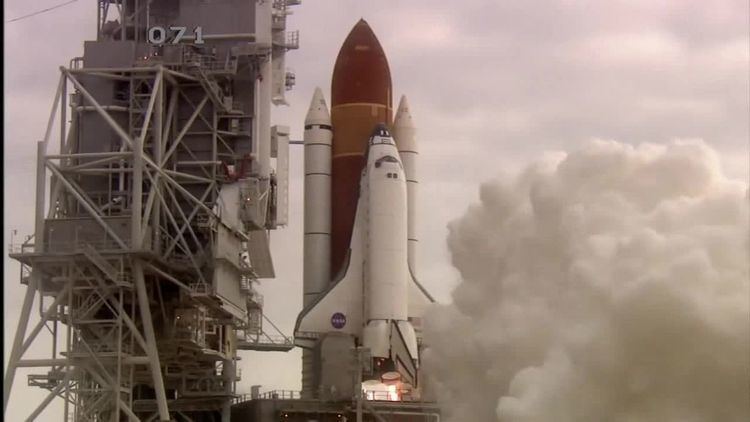 | ||
A rocket launch is the takeoff phase of the flight of a rocket. Launches for orbital spaceflights, or launches into interplanetary space, are usually from a fixed location on the ground, but may also be from a floating platform (such as the Sea Launch vessel) or, potentially, from a superheavy An-225-class airplane
Contents
Launches of suborbital flights (including missile launches), can also be from:
Launches not into space can also be from:
A skyrocket is launched from some stand.
"Rocket launch technologies" generally refers to the entire set of systems needed to successfully launch a vehicle, not just the vehicle itself, but also the firing control systems, ground control station, launch pad, and tracking stations needed for a successful launch and/or recovery.
Commercial launches
Commercial launch service providers include:
Launch vehicles
If a rocket is launched to deliver a payload from a planetary surface into space it is called a launch vehicle.
There are several broad categories that launch vehicles fall under, including:
For the launch vehicles currently in use for human spaceflight, see that article.
There were over 70 orbital launches in 2010.
Orbital launches
Orbital launch vehicles commonly take off vertically, and then begin to progressively lean over, usually following a gravity turn trajectory.
Once above the majority of the atmosphere, the vehicle then angles the rocket jet, pointing it largely horizontally but somewhat downwards, which permits the vehicle to gain and then maintain altitude while increasing horizontal speed. As the speed grows, the vehicle will become more and more horizontal until at orbital speed, the engine will cut off.
All current vehicles will stage-jettison hardware on the way to orbit.
When launching a spacecraft to orbit, a "dogleg" is a guided, powered turn during ascent phase that causes a rocket's flight path to deviate from a "straight" path. A dogleg is necessary if the desired launch azimuth, to reach a desired orbital inclination, would take the ground track over land (or over a populated area, e.g. Russia usually does launch over land, but over unpopulated areas), or if the rocket is trying to reach an orbital plane that does not reach the latitude of the launch site. Doglegs are undesirable due to extra onboard fuel required, causing heavier load, and a reduction of vehicle performance.
